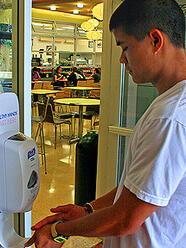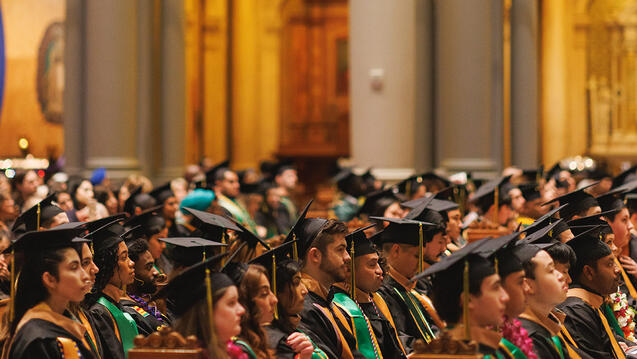
Prevent H1N1
The University of San Francisco is urging students, faculty, and staff to take steps to prevent the spread of the H1N1 flu virus, also known as swine flu, and educate themselves on how to respond should they or someone they know develop flu-like symptoms.

USF has launched a new website with the latest flu prevention and response information, including links to the Centers for Disease Control (CDC) and the San Francisco Department of Public Health (SFDPH).
H1N1 flu symptoms are similar to the seasonal flu and include fever, sore throat, cough, headache, runny nose, and body aches. A significant number of people who have been infected with H1N1 have also reported diarrhea and vomiting, according to the CDC.
Typically, H1N1 requires no medical care. And the majority of those who contract H1N1 recover on their own within five days and can return to work or school 24 hours after any fever has gone.
H1N1 is something to take preventative measures against and to be treated and managed just as any seasonal flu virus, said USF Dean of Students and Associate Vice President Mary Wardell.
With about half of all H1N1 flu cases affecting people ages 5-24, a special pandemic taskforce has been meeting at USF since the spring to develop educational strategies and to ensure containment and the continuity of critical university business if an outbreak occurs.
“We’ve even looked at what options are available for continuing student courses that have already started, whether it be Web based or otherwise,” Wardell said.
The first line of defense against any flu is practicing good hygiene, such as sneezing and coughing into a tissue then disposing of the tissue, washing your hands frequently with hot soapy water, and remaining at home if you experience flu-like symptoms.
“People know these hygienic measures but they forget to practice them,” Wardell said. “Which is why USF has posted signs in highly trafficked areas, including the residence halls, to remind students, faculty, and staff to regularly wash their hands.”
The university has also installed hand sanitizer dispensers at many building entrances.
An H1N1 flu vaccine is recommended, in addition to the season flu vaccine as preventative measures. While the seasonal flu vaccine will help protect against a number of flu strains, it is not expected to protect against H1N1. Currently, the H1N1 vaccine isn’t available but USF is in close communication with SFDPH about the development of the vaccine.
Seasonal flu shots will be available on campus beginning Sept. 15 and administrators are attempting to have the same service provided for H1N1, through local health authorities.
In addition, USF has asked its janitorial staff to step up cleanings on surfaces such as doorknobs and staircase railings, as well as in restrooms and communal areas in the residence halls.
Those who do experience flu-like symptoms should remain at home, self-isolate from others, choose one person as a caregiver, and seek medical attention if the illness becomes severe, according to the CDC.
By preventing the spread of the virus early, USF hopes to avoid any widespread flu outbreak, such as those reported at some other institutions of higher learning, Wardell said.


